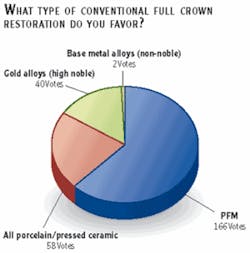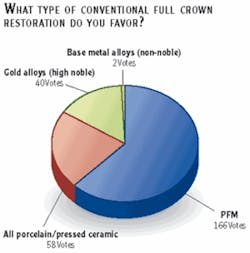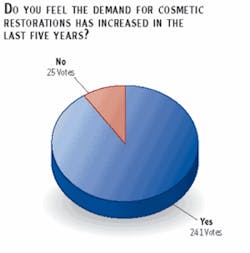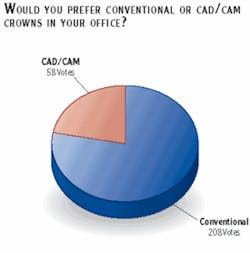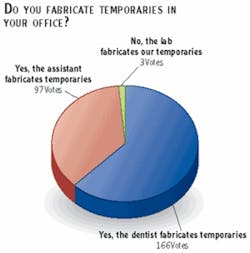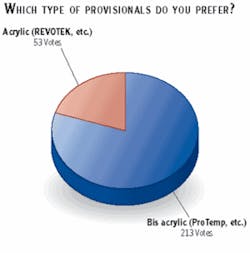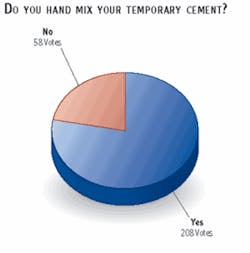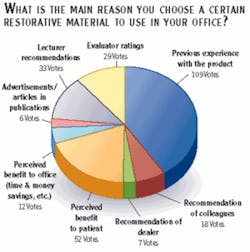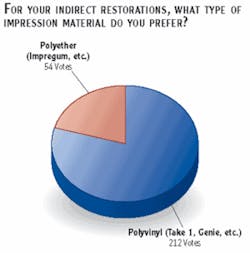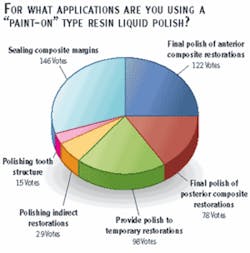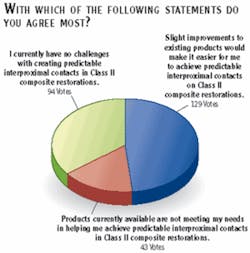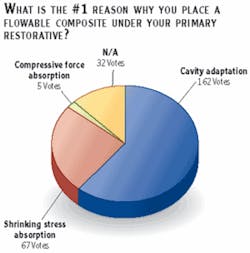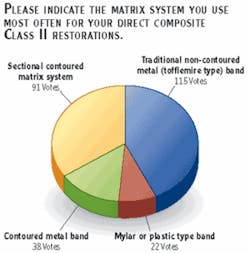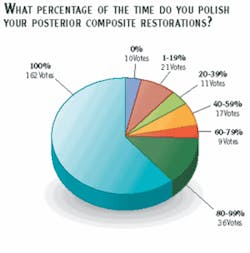What you said about restorative materials
We asked. You answered. What do you and your colleagues like and dislike in the world of materials? Read on...
By Louis Malcmacher, DDS
The restorative material survey presented here is an important one because it really gives you an idea of the trends that are happening in dentistry today. One of the most important trends that I see in the survey is the overwhelming response of, “Yes,” to the question, “Do you feel the demand for cosmetic restorations has increased in the last five years?” Overwhelmingly, dentists have seen this almost meteoric rise in the interest of cosmetics among patients, especially in the last 10 years. This question alone sets the tone for the rest of the survey.
The general trend that I see throughout this survey is that dentists are more and more using highly esthetic materials to restore teeth to meet this demand. For crown and bridge, there is no question that many practitioners favor PFM (porcelain-fused-to-metal) crowns. However, all porcelain/pressed ceramic crowns are definitely increasing in popularity. Along with that, gold alloys, such as Captek and others, also seem to be increasing in popularity. These gold alloy-based restorations are also highly esthetic, much more so than the semiprecious and nonprecious metals that tend to make porcelain-fused-to-metal crowns look artificial. My guess is that we will see materials like Captek, Wol-Ceram, Procera, and others like them increase in popularity as the esthetic demands of our patients increase.
According to this survey, there is an obvious increase in the attention and interest in CAD/CAM crowns for the dental office, primarily powered by the Sirona Company’s CEREC 3D. It will be interesting to see how this segment does as more companies jump into the CAD/CAM category.
It seems from the survey that dentists are definitely looking and finding faster, easier, and better ways to do temporary provisionals. Bisacrylic materials - like Pro-Temp, Gorgeous Temp, Luxatemp, and others in this category - have been embraced heavily by dental offices. Ease of use of material, esthetic of the material, lack of heat generated upon curing, and ease of adding onto these materials are the primary reasons they have become so popular.
Dentists also like to stick to techniques that work well for them. A number of years ago, as posterior composite resins available on the market may not have been the best materials to use for restoring posterior teeth, it became common to place a flowable composite underneath these, primarily for cavity adaptation. We always worried we would get voids at the margins if we used a very heavily filled and thick resin material. This obviously has worked well for many dentists as, according to the survey, this is still very popular for those who place posterior composite resins. Success is a real test for restorative techniques; if this has worked well for you, then by all means keep using it. Flowable composite resins such as Elite Flow, Virtuoso Flowable, Gradia Direct Flow, and others have worked very well underneath posterior composite resins and we will probably continue to see this in the future.
Something that has not been as successful for the posterior composite resins has been the old style tofflemeyer matrix systems. Tofflemeyer matrix systems were made and designed primarily for amalgam and for a material that you could actually push in order to get a good contact. This is not true of posterior composite resins and is indeed one of the biggest complaints that I see that general practitioners have with placing posterior composite resins. It is often difficult to obtain a good, long, proximal contact like we have been able to do with amalgam. Specialized and sectional matrix systems such as compositite and bitine rings with a dead soft sectional matrix have made the accomplishment of obtaining a positive interproximal contact in posterior teeth much easier. The survey also reveals another secret about getting this good, tight contact and that is with aggressive wedging. Aggressively wedging the teeth with a good sectional matrix system will give you a great proximal contact in posterior teeth with composite resin materials.
I am thankful to Dental Equipment & Materials for doing these kinds of surveys. It gives us a good feel for where the dental market is and what dentists are using on a regular basis. I always find these helpful for my daily practice of dentistry and I’m sure you will as well.
Dr. Louis Malcmacher is an evaluator for Clinical Research Associates, and often is a consultant to the Council on Dental Practice of the ADA. For close to two decades, Dr. Malcmacher has inspired his audiences to truly enjoy practicing dentistry by providing the knowledge necessary for excellent clinical and practice-management skills. For details about his speaking schedule, Dr. Malcmacher can be reached at (440) 892-1810 or via e-mail at [email protected].
null
null
null
null
null
null
null
null
null
null
null
null
null
null
null
null
null
null
null
null
null
null
null
null
